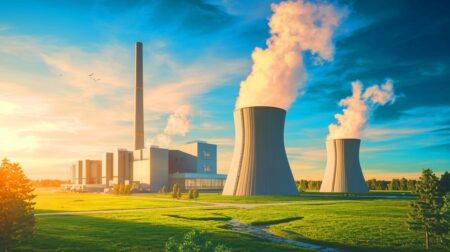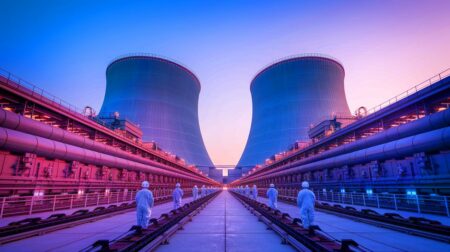| IN A NUTSHELL |
|
Kawasaki Heavy Industries has taken a bold step into the future of personal mobility with its latest concept vehicle, the Corleo. This hydrogen-powered robotic horse combines cutting-edge technology with imaginative design to offer a glimpse of what transportation might look like in the years to come. With its ability to navigate rugged terrains and its AI-enhanced vision system, the Corleo is more than just a transport device; it’s a futuristic marvel that challenges our understanding of mobility. As we delve into the features and potential of this remarkable invention, one can’t help but wonder how such innovations will shape our future.
The Revolutionary Design of the Corleo
The Corleo stands out not just for its unique concept but also for its innovative design. This two-seater quadruped robot is engineered to be steered by the rider’s body movements, a feature that takes inspiration from the intuitive control of a traditional horse. Equipped with AI vision, the Corleo can navigate challenging terrains, ensuring a smooth ride for its passengers. The hydrogen-fueled generator engine is another standout feature, producing only fresh water as a byproduct, thus emphasizing its eco-friendly credentials.
The design incorporates bifurcated hooves with grippy rubber treads, providing stability and traction on various surfaces. Adjustable stirrups accommodate a wide range of riders, while a floating seat unit ensures comfort. The inclusion of a wind-deflecting screen hints at the potential high-speed capabilities of this robotic horse, adding an exciting dimension to its functionality. The Corleo is not just a mode of transport; it’s a blend of technology and creativity, pushing the boundaries of what’s possible in personal mobility.
US Wholesale Prices Stay High, Indicating Inflation May Linger
Harnessing the Power of Hydrogen Fuel
At the heart of the Corleo’s operation is its hydrogen-fueled power system. Hydrogen fuel cells are increasingly recognized for their potential to revolutionize the automotive industry due to their clean energy output. The Corleo’s engine, a 150cc generator, uses hydrogen to produce energy, emitting only water vapor as a byproduct. This positions the Corleo as a sustainable alternative to traditional fuel-powered vehicles, aligning with global efforts to reduce carbon emissions and combat climate change.
The use of hydrogen fuel not only underscores Kawasaki’s commitment to environmental sustainability but also highlights their forward-thinking approach to innovation. As the world moves towards greener energy solutions, the Corleo represents a significant step in this direction, setting a precedent for future developments in hydrogen-powered technology. The implications of such advancements are profound, as they pave the way for a cleaner, more sustainable future in personal transportation.
AI and the Future of Mobility
The integration of artificial intelligence into the Corleo is a testament to Kawasaki’s vision for the future of mobility. The AI system continuously analyzes the position of both the robot and the rider, ensuring optimal balance and safety. This intelligent system allows the Corleo to respond to the rider’s body language, providing an intuitive and seamless riding experience. Such advanced capabilities transform the robotic horse into a responsive and dynamic vehicle, capable of adapting to various terrains and scenarios.
AI in mobility is a game-changer, offering enhanced safety, efficiency, and user experience. The Corleo’s AI-driven features, such as analyzing potential footfalls and highlighting paths with illuminated arrows, demonstrate the immense potential of this technology. As AI continues to evolve, its application in vehicles like the Corleo will likely become more sophisticated, leading to a new era of smart transportation solutions.
The Road Ahead: Challenges and Possibilities
The Corleo, while a groundbreaking concept, presents its own set of challenges. Being a concept vehicle, it is largely a vision of what could be possible in the distant future, specifically aimed at a 2050 mobility project. The current prototype showcases its potential but also highlights the technological hurdles that need to be overcome for full-scale production. Despite these challenges, the idea of a hydrogen-powered robotic horse is exciting and opens up a world of possibilities for personal transport.
Other companies, like XPeng, are already exploring rideable quadrupeds, indicating a growing interest in this niche market. While the Corleo might seem like a distant dream, the rapid advancements in technology suggest that such innovations could become part of our reality sooner than we think. As we look to the future, the question remains: how will these futuristic concepts transform the way we move and interact with our environment?
In conclusion, Kawasaki’s Corleo is more than just a concept vehicle; it is a bold statement about the future of transportation. Its combination of hydrogen power, AI technology, and innovative design challenges conventional notions of mobility. While it is still in the conceptual stage, the Corleo sparks the imagination and invites us to rethink the possibilities of personal transport. As we continue to explore the potential of such technologies, we must ask ourselves: what role will these innovations play in shaping the landscapes of our cities and the way we live our lives?
Did you like it? 4.5/5 (25)












Wow, a robot horse! 🐴 What’s next, flying cars? 🚀
I’m curious about the safety measures. How does it handle emergencies? 🤔
Hydrogen-powered? That’s impressive! But is it affordable? 💸
Honestly, this sounds more like a toy for the rich than a practical vehicle.
Can it be customized to look like a unicorn? 🦄
Does it have a name? I think “Robo-Pony” has a nice ring to it! 😄
This is a game-changer for eco-friendly transportation! 🌍
How long before we see these in our cities?
Are there male and female versions? Trans versions? Lol wtf
Wow is its enough running limited 150cc ? …which winner horse race vs jedi-kawi Bow riders ? Off/On the roads legal into the europrean spirit sport racer…not in 2050 Now!!!
Now this song will hit differently “Yeah, I’m gonna take my horse to the old town road
I’m gonna ride ’til I can’t no more”